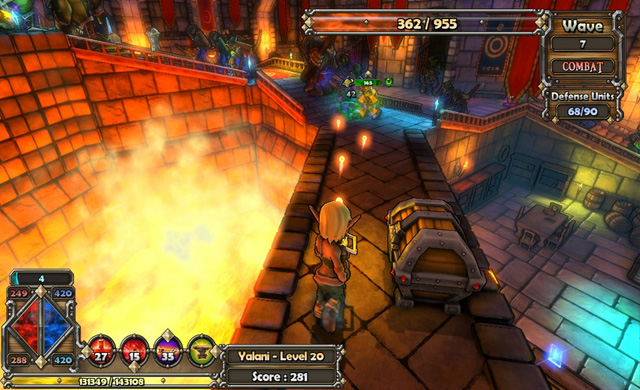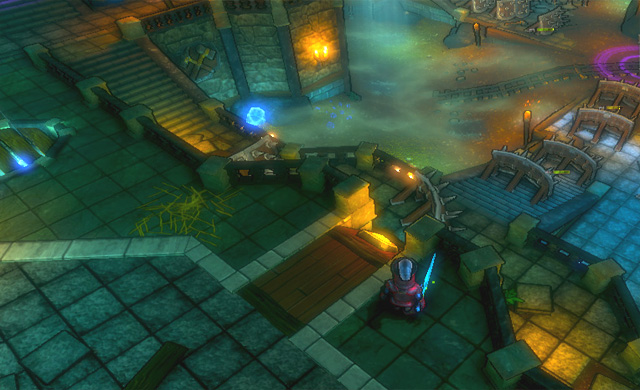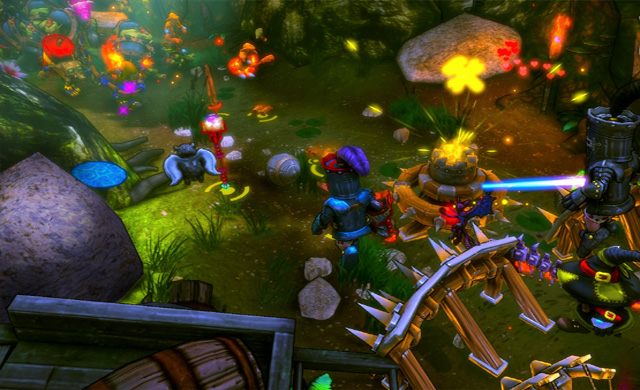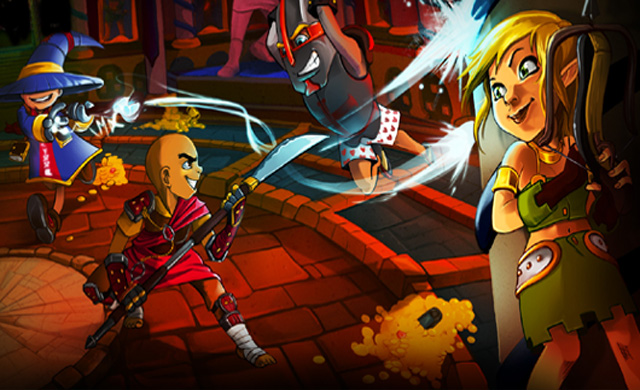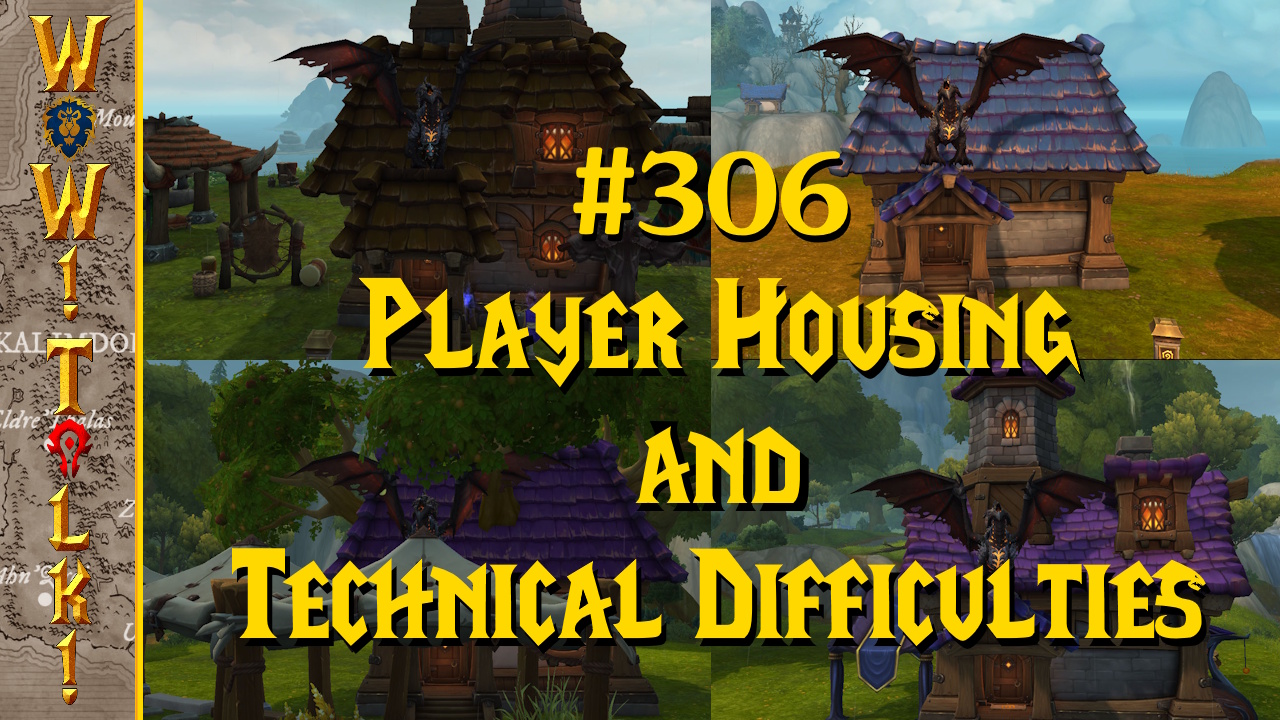While there are hordes of Tower Defense games to choose from on today’s market, Trendy Entertainment brings us a unique Tower Defense game that stands out from the pack; way out. It mixes all the fun and strategy of a Tower Defense game with the action and multiplayer magic of a Dungeon Crawler to create a truly incredible experience. So get your nimble fingers and some fresh controllers ready, because we’re off to fight some beasties and save the lands from certain doom.
The story begins in the far away land of Etheria; a medieval world of magic and mystery. Long ago, the great heroes of the land fought with the creatures known as the Old Ones. They locked them away within the magical Eternia crystals in order to stop their evil conquest in its tracks.
Now, many years later, the heroes must set out to do battle once again; leaving their younger kin to watch over the kingdom. As luck, or lack there of, would have it; the younglings have accidentally released a powerful force that seeks to reawaken the imprisoned Old Ones. They must stop this new threat before it can destroy the Eternia crystals and release the evil they have locked deep within.
Now, upon entering the game, the player will be given a choice of four classes; The Apprentice, the Squire, the Huntress, and the Monk. Each class increases in difficulty respectively; the game displays this for new players, as to give them an idea as to which class they may wish to start with whilst they learn the proverbial ropes.
Each class in Dungeon Defenders is a rather drastically different experience. This not only adds a great deal of replay value, but also adds to the importance of multiplayer team balance. Also, to avoid the annoyance of multi-character play, all mana crystals stored in the bank and items in the hero’s box are shared across all characters. This drastically cuts back on needless grinding and keeps the pace of the game from dragging across multiple characters.
The Apprentice is the most balanced of the classes, but doesn’t truly excel in any area either. They are the jack of all trades and a solid member of any party. They can drop magical defense towers and create barriers to dispel enemy enchantments and stop enemies for a time. Their ranged staff ability allow them to stay out of battle and their close range ability helps them escape when surrounded. This “middle of the road” style gameplay makes them a perfect choice for gamers of any skill level.
Next, is the Squire. Gifted with incredibly high defense levels and melee proficiency, they are a perfect choice for anyone looking for a more “hands-on” approach to Tower Defense. Their abilities primarily focus on staying in the fray of battle, while their defensive structures are designed to halt enemy movements while slowly damaging them. Sadly, their strength does come at a price and that price is speed. One of the slowest classes in the game, a Squire must use their strength to quickly stop their enemies before they can get past them.
The Huntress is the classic ranged damage-dealer. They’re nimble on their feet and specialize in long range weaponry, allowing them to stay out of harm’s way while decimating their enemies quickly. Their abilities focus on keeping themselves out of their enemy’s clutches while their defense structures are designed to deal area damage to large groups of enemies. While powerful, they do not work like walls, like the Squire or Apprentice; which can lead to trouble at times if they are not correctly laid out. She is one of the weakest characters defensively, and so will need to stay out of arm’s-length or she can be quickly crushed by surrounding enemy soldiers.
The stoic warrior, the Monk, is a difficult class to learn, but a very powerful ally to have on the battlefield. They can not only deal solid damage levels in melee and ranged combat, but can also summon powerful auras. These auras can both bolster the abilities and health of allies, as well as cripple and demoralize incoming enemies. Similar to the Huntress, these are area effects and therefore do not work like the wall-like structures of the Apprentice and Squire. This can make the Monk a very difficult class for new and solo players alike. Within a party, however, Monks are a force to be reckoned with.
After selecting a class, the player can customize the appearance of their hero and bestow upon them a name of their choosing and continue on to their journey to save the lands of Etheria.
Once the player has set up their class and settled on an appearance they like, they are ready for action. Here, the player may try to jump right into the game or they may choose a full (or shortened) tutorial that will walk them through all of the basic facets of the game at large. They will learn the concept of each of the hero’s abilities, the usage of defense structures, how to level a character, the hero forge and its uses, the importance of mana crystals, and even the basics of the combat and build waves. While this all may seem a bit daunting when you hear it for the first time, the narrated tutorial does an amazing job of truly guiding you through the process. This can, of course, be deactivated if not needed later, but a very welcome feature for new players.
The controls, both on the PC as well as the console, are very comfortable and easily learned by any player while thoroughly described in detail during the tutorial level. The console versions, or the controller mode on the PC, also support a very-welcomed auto aim to account for the lack of mouse control accuracy. The actions are responsive and the menus are easy to navigate quickly and efficiently making this a sure fit for anyone.
One of the first things most players will notice about Dungeon Defenders is the simple and light-hearted art style. In the vane of Torchlight and Warcraft, Dungeon Defenders‘ stylized characters and quirky colorful world give it and almost fairytale feel. Beyond the fantastic in-game visuals, the menus and in game displays are slick, polished, and simple to understand; leaving very little to be desired.
After finishing the tutorial, or skipping ahead, the player will arrive at the local inn. This inn will essentially serve as the player’s virtual home base of operations in Dungeon Defenders. Between missions the player, and their party, will rest at the inn where they can practice their newly acquired moves, trade items, equip new weapons and equipment, or even buy some items from the friendly shopkeeper.
From the Eternia crystal in the center of the inn, the player can access current and previous missions, take on newly unlocked challenge missions, or enter specialized additional modes. These additional modes allow for a variety of increasing challenges for players looking for a different type of gameplay. In Survival mode, the players must stand against infinite waves of increasingly difficult hordes until defeated, or in Pure Strategy mode they must go without their attacks and abilities and survive by relying entirely on their defense structures to stop the incoming hordes. These are truly challenging, but are a great change of pace every now and then.
Once inside a mission, Dungeon Defenders is essentially broken down into two essential parts; the build wave and the combat wave. At the beginning of each set, or the build wave, the players will build up their defenses. Dropping traps, channeling auras, constructing towers, or using the hero forge to enhance their weaponry and armor or to safely bank any additional mana crystals they are not in need of carrying at the time. Once they’re ready, they can activate the Eternia crystal’s power to signal the beginning of the combat phase.
In keeping with its namesake, the combat phase activates the enemy hordes and allows them to enter the zone. One unique feature, rare to the genre, is that the game will actually tell the players what will be coming from each entry door in the zone next wave before the combat wave begins. While seemingly not the most amazing feature, it truly is. This not only allows the player to better plan for the next incoming attack, it takes the Tower Defense genre out of the random hope for the best setup and directly into a much more strategy-minded way of thinking. Using this feature in conjunction with good teamwork, the game’s later challenges will be much more manageable.
The leveling system should feel completely natural to hardened RPG fans and new players alike. Each menu has detailed descriptions of each ability and stat and what their functions and effects are on the character as a whole. With each new level players can decide how to build their character based on whatever path they wish. Will they make a Squire and spend unscrupulous amounts of points on speed in order to make them a lightning-fast killing machine, or perhaps the super quick ability-channeling mage? In the end, the options are truly vast.
Another unique aspect to character customization is the pet system found within Dungeon Defenders. These pets, or “familiars,” can be found amongst the mounds of loot found in-game, or bought at the inn and come in numerous varieties, sizes, and stat levels. They can attack, buff allies, and some even will use player mana for explosively powerful attacks. This not only adds to the visual flare of a character but can effect how they play, only adding more reason to grind for rarer and rarer familiars.
One interesting concept, held throughout the game, is the incredible importance of the mana crystals. These little glowing crystals not only serve as fuel for the player’s abilities and pay for their defensive structures, but they also serve as the monetary system of the game and the element used in upgrading weapons and equipment. They essentially control the flow of the entire game. This not only makes it simpler for more casual players, but also adds a different level of strategy. Mana crystal budgeting during missions will allow their usage later at the shop or during the upgrade of a weapon. Use them now or save them for later?
At it’s heart, Dungeon Defenders is a multiplayer game. The single player is a solid experience, but the multiplayer is where the true meat of the game can be found. The multiplayer not only runs well, it runs impressively well. Starting or joining a game is a quick process and the game rarely ran into issues of its own design. The frame rates were always impressively consistent and left little to be desired. From the unique style of gameplay, to the fun of mixing defensive structures and hero abilities, to the classic looting fun of adventure gaming; this one is worth getting some friends together or meeting some new ones online.
In the end, Dungeon Defenders is a uniquely fun title and a rarity in the genre. It takes Tower Defense in a whole new direction and brings in a multiplayer adventure element that has you constantly coming back for more. From numerously challenging levels to a fantastic character system and mounds of multiplayer looting, Dungeon Defenders is definitely worth checking out.



